Gordon Holmes Syndrome Model Mice Exhibit Alterations in Microglia, Age, and Sex-Specific Disruptions in Cognitive and Proprioceptive Function
- PMID: 38164552
- PMCID: PMC10849025
- DOI: 10.1523/ENEURO.0074-23.2023
Gordon Holmes Syndrome Model Mice Exhibit Alterations in Microglia, Age, and Sex-Specific Disruptions in Cognitive and Proprioceptive Function
Abstract
Gordon Holmes syndrome (GHS) is a neurological disorder associated with neuroendocrine, cognitive, and motor impairments with corresponding neurodegeneration. Mutations in the E3 ubiquitin ligase RNF216 are strongly linked to GHS. Previous studies show that deletion of Rnf216 in mice led to sex-specific neuroendocrine dysfunction due to disruptions in the hypothalamic-pituitary-gonadal axis. To address RNF216 action in cognitive and motor functions, we tested Rnf216 knock-out (KO) mice in a battery of motor and learning tasks for a duration of 1 year. Although male and female KO mice did not demonstrate prominent motor phenotypes, KO females displayed abnormal limb clasping. KO mice also showed age-dependent strategy and associative learning impairments with sex-dependent alterations of microglia in the hippocampus and cortex. Additionally, KO males but not females had more negative resting membrane potentials in the CA1 hippocampus without any changes in miniature excitatory postsynaptic current (mEPSC) frequencies or amplitudes. Our findings show that constitutive deletion of Rnf216 alters microglia and neuronal excitability, which may provide insights into the etiology of sex-specific impairments in GHS.
Keywords: Gordon Holmes syndrome; RNF216; ataxia; cognitive; microglia; ubiquitin.
Copyright © 2024 George et al.
Figures
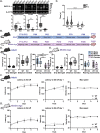

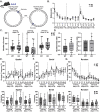
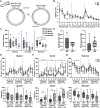
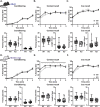


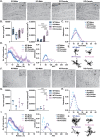
Similar articles
-
Structural basis of K63-ubiquitin chain formation by the Gordon-Holmes syndrome RBR E3 ubiquitin ligase RNF216.Mol Cell. 2022 Feb 3;82(3):598-615.e8. doi: 10.1016/j.molcel.2021.12.005. Epub 2022 Jan 7. Mol Cell. 2022. PMID: 34998453
-
The E3 ubiquitin ligase RNF216/TRIAD3 is a key coordinator of the hypothalamic-pituitary-gonadal axis.iScience. 2022 May 10;25(6):104386. doi: 10.1016/j.isci.2022.104386. eCollection 2022 Jun 17. iScience. 2022. PMID: 35620441 Free PMC article.
-
TRIAD3/RNF216 mutations associated with Gordon Holmes syndrome lead to synaptic and cognitive impairments via Arc misregulation.Aging Cell. 2017 Apr;16(2):281-292. doi: 10.1111/acel.12551. Epub 2016 Dec 20. Aging Cell. 2017. PMID: 27995769 Free PMC article.
-
Ataxia and Hypogonadism: a Review of the Associated Genes and Syndromes.Cerebellum. 2024 Apr;23(2):688-701. doi: 10.1007/s12311-023-01549-x. Epub 2023 Mar 30. Cerebellum. 2024. PMID: 36997834 Review.
-
Clinical and genetic spectrum of RNF216-related disorder: a new case and literature review.J Med Genet. 2024 Apr 19;61(5):430-434. doi: 10.1136/jmg-2023-109397. J Med Genet. 2024. PMID: 38050071 Review.
References
-
- Bordi F, LeDoux JE (1994) Response properties of single units in areas of rat auditory thalamus that project to the amygdala. II. Cells receiving convergent auditory and somatosensory inputs and cells antidromically activated by amygdala stimulation. Exp Brain Res 98:275–286. 10.1007/BF00228415 - DOI - PubMed
MeSH terms
Substances
Supplementary concepts
Grants and funding
LinkOut - more resources
Full Text Sources
Molecular Biology Databases
Research Materials
Miscellaneous
